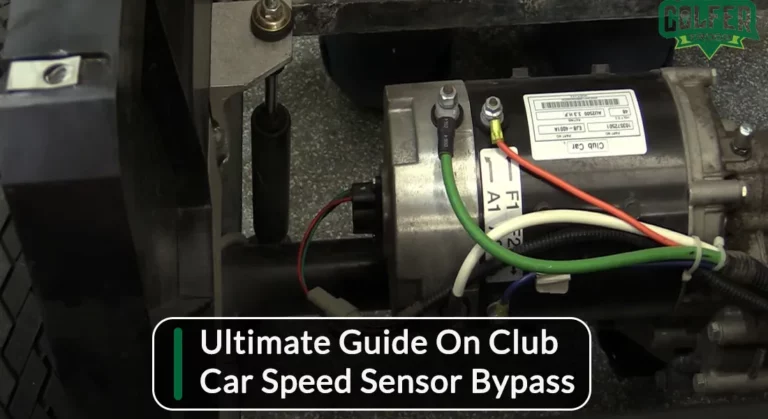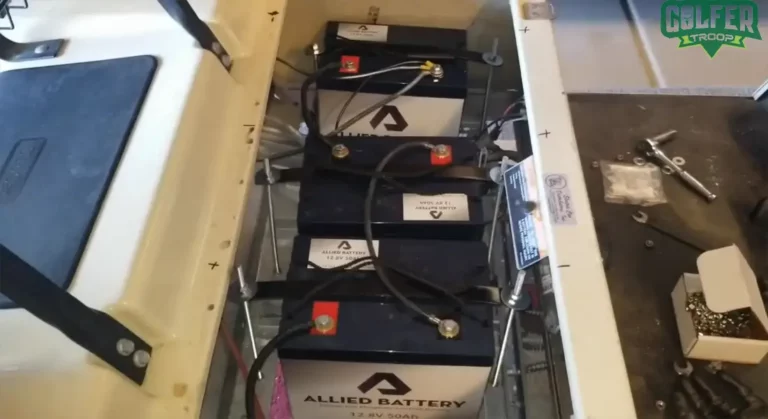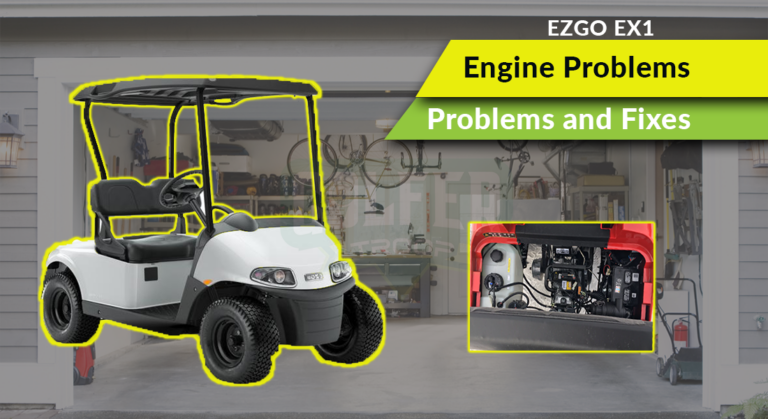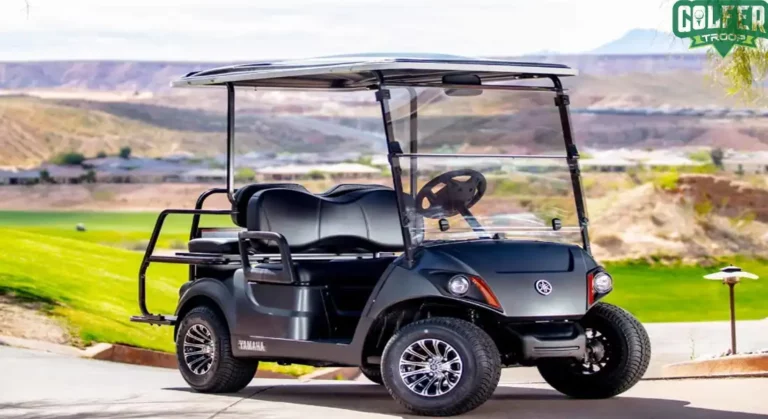What You Should Do: Yamaha Golf Cart Drive Belt Slipping
It is often tiring to “par” most of the balls in a continuous manner, as it requires going here and there within the court to get the perfect shots. This action of yours requires hovering over ups and downs using the cart. But, unfortunately, there is a usual problem associated here: often, its drive belt slips.
So, why is the Yamaha golf cart drive belt slipping? The reasons are misalignment of the belt pulley, weak tensioner, clutch closing up, worn out belt, loose belt, and so on.
Here, we inform you of the causes and solutions of cart belt slipping in a detailed manner.
Reason and Solutions: Slipping Yamaha Golf Cart Drive Belt
This section is subjected to assist you in understanding the reasons for belt slipping, like a misaligned pulley, weak tensioner, etc. We also elaborate on the solutions of these sissies.
1. Misaligned Pulley
Accommodated pulleys in the Yamaha golf cart are the crucial components to make the machine move upward, downward, front, and back.
But, in the case of improper installation, worn down components, loose mounting bolts, etc., the cart’s pulleys cannot function properly, triggering slippage.
Here, the misaligned pulleys welcome uneven tension on the drive belt. And some parts of the belt start to be pulled tighter than others.
Additionally, an increased amount of friction occurs, generating excessive heat that damages the belt’s material.
Finally, this imbalanced context results in the drive belt drifting away from its intended path.
Following this, pulleys lose the gripping during acceleration or face increased resistance. It mostly happens when climbing hills.
How to Solve
To fix misaligned pulleys, first, examine the pulley to identify if the pulley is twisted or if there are any unusual marks.
In case of such a finding, loosen the pulley-mounting screws and adjust their positions. It is to align with each other through the belt’s path.
We highly recommend using the right tools for precise alignment. And after achieving proper alignment, ensure the screws are fixed appropriately. You must follow the manufacturer’s torque specifications.
Before finishing, inspect related components like brackets and mounts for damage and make a replacement if needed. Finally, take your cart for a test drive on a hill to evaluate the belt’s performance.
2. Weak Tensioner
In your Yamaha golf cart, the tensioner is an advanced technological solution that acts as a help. How? Here, we elaborate, the cart’s engine and the transmission are like two friends who go hand-in-hand.
Now, when you hit the gas pedal really hard to deal with an inclined slope, the associated mechanical force gives them a strong pull apart.
Unfortunately, at this time, both elements fail to work simultaneously because it’s like using a longer rope connected, and you have pulled one side suddenly.
Here, the tensioner’s job is to stop this from happening. It is designated to pull everything tight when you hit the gas hard to ensure everything remains in the same setting.
Jokes apart, this helps the cart work smoothly and prevents problems like feeling shaky or struggling to go up hills or pull heavy things.
But, if you’re going slowly, the tensioner doesn’t do much in the general driving condition.
But, if the tensioner is not in good condition and you pressure the transmissions to go upward faster, the belt won’t support the overall context at all. Hence, slipping off the belt happens.
In short, when the tensioner is weak, it can’t hold the respective rubber band tight enough while you are in quick shifting of the transmissions.
So, when you hit the gas or go up a hill, the rubber band slips. Remember that the addressing approach is a professional task.
How to Solve
To resolve the issue of a weak tensioner causing the drive belt to slip in a Yamaha golf cart, you first have to do it to check for any physical damage.
If you observe any crack, degradation in the components, or the overall condition is very poor due to long use, replace it.
If you sense replacement is necessary, you must incorporate the manufacturer’s specifications of belt aligning the tensioner. And it is always better to regularly maintain the tensioner to increase its longevity.
You should inspect and lubricate the tensioner’s moving parts on a scheduled basis.
3. Closing of Clutch
The clutch, or Continuously Variable Transmission in a golf cart, consists of two crucial parts: the primary clutch and the secondary clutch. Here, the primary clutch is known as drive clutch and the second one is known as driven clutch.
The functions of the clutch ensure smooth riding in terms of disruption-free acceleration and reliable braking. Here, a closing clutch, also known as a centrifugal clutch, makes your golf cart’s belt slip if you engage this mechanical component forcefully or do not disengage properly.
Hence, it causes the belt to lose traction on the pulleys and encounter slipping.
How to Solve
To fix this issue, you need to adjust or replace the clutch. In the repair process, you have to ensure that the components engage and disengage smoothly.
To solve the closing clutch issue, go to a professional if you do not have adequate knowledge to deal with it.
4. Worn Out Belt
With the passage of time, the cart’s belt gets worn out. And if you drive the golf cart with such a belt, it can result in belt slippage.
The slippage usually occurs due to a disconnect between the engine and the rear wheels. This slip prevents your cart’s engine from effectively propelling the wheels, leading to issues with acceleration and speed.
How to Solve
The only solution in this case is to replace the worn belt. However, if you are on a tight budget, go for a temporary solution by improving torque and speed.
However, we would like to inform you that do not waste money to replace the worn belt in a workshop. It is a very DIY method: save money.
5. Loose Belt
A loose belt in your golf cart eventually causes the drive belt to slip. Here, the reason is that it doesn’t grip the pulleys tightly enough.
To elaborate, the drive belt works like a rubber band connecting the engine to the wheels of the golf cart.
So, for the appropriate functioning of the system, this rubber band must be stretched in the right manner: not too tight and not too loose. And if it’s too loose, it gets extracted by slipping.
Following this, if the belt is loose, it won’t be capable of a set of pulleys as per standard requirements. So, when you press the gas pedal, the belt slips on the pulleys like a loose band.
How to Solve
The process is simple: just fix the loosening issue by adjusting the tension. It will ensure that the belt is appropriately snug and properly holds onto the pulleys.
Hence, there will be no slipping context of the belt. We see that with the right tools in hand, you can do it in the house.
People Also Ask
Here, we answer some common questions,
What should I do if my Yamaha golf cart’s drive belt keeps slipping even after adjustment?
If the belt continues to slip even after you have applied the above-mentioned addressing approaches, consult a golf cart technician or mechanic. In general, it will cost you around $80-$300.
Are there aftermarket drive belts available for Yamaha golf carts?
Yes, there are aftermarket drive belts designed for Yamaha golf carts. But we suggest you purchase one after ensuring the compatibility issue.
Can the drive belt slipping cause damage to other parts of my Yamaha golf cart?
Yes, the other cart parts can get damaged if you do not promptly address the belt slipping issue. Prolonged drive belt slipping increases wear on clutches and other components, which welcomes the damage of other components.
Final Words
If your Yamaha golf cart’s drive belt starts slipping, it is surely overwhelming. Certainly, it negatively impacts the vehicle’s performance but also imposes destruction on your performance to get those critical shots.
We hope that our detailing of Yamaha golf cart drive belt slipping problems and solutions will assist you enormously in the future.
Finally, regular maintenance and attention to the cart’s mechanical components can help prevent this issue from recurring while ensuring a smoother and more enjoyable ride and play.
Meet Jalal, a passionate golf writer and the driving force behind Golfertroop.com, your go-to destination for all things golfing! Whether you’re a seasoned golfing veteran or a beginner taking your first swing, Jalal is here to assist you in making the most out of your golfing experience.

![Where Is the Fuse Box on a 48 Volt Club Car? [Find Out Now]](https://www.golfertroop.com/wp-content/uploads/2023/08/Where-Is-the-Fuse-Box-on-a-48-Volt-Club-Car-768x419.png)



